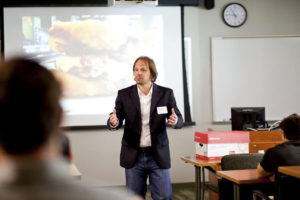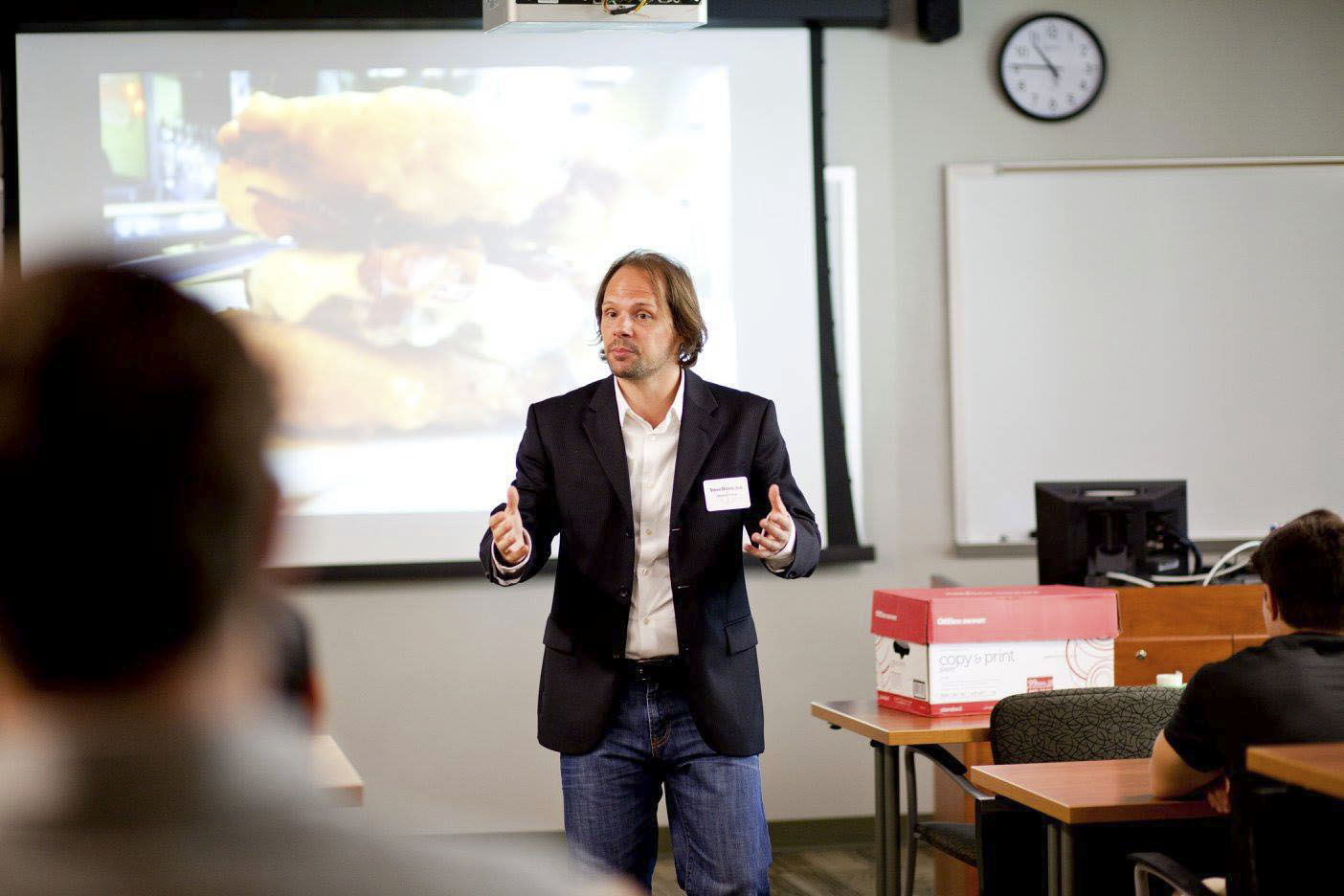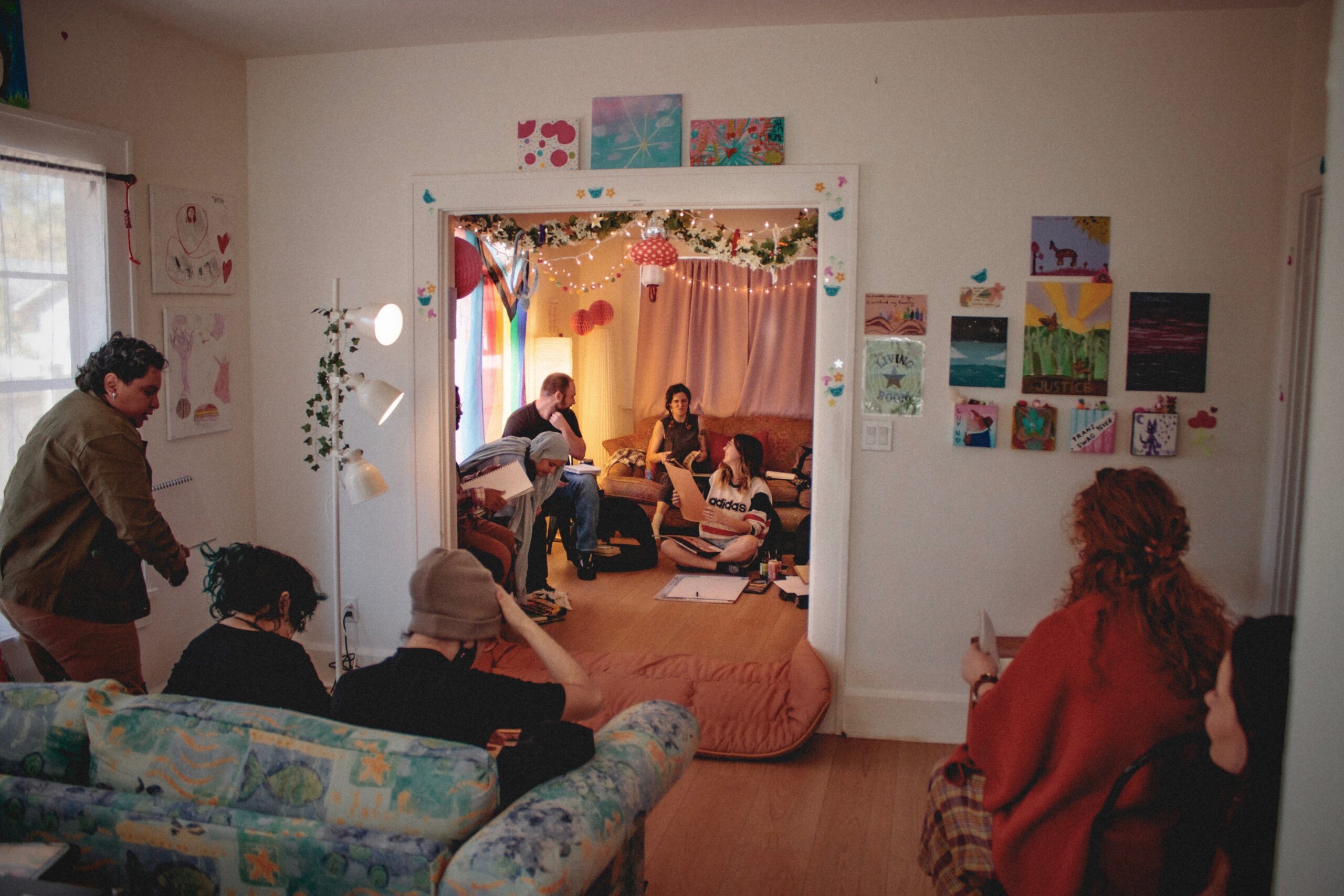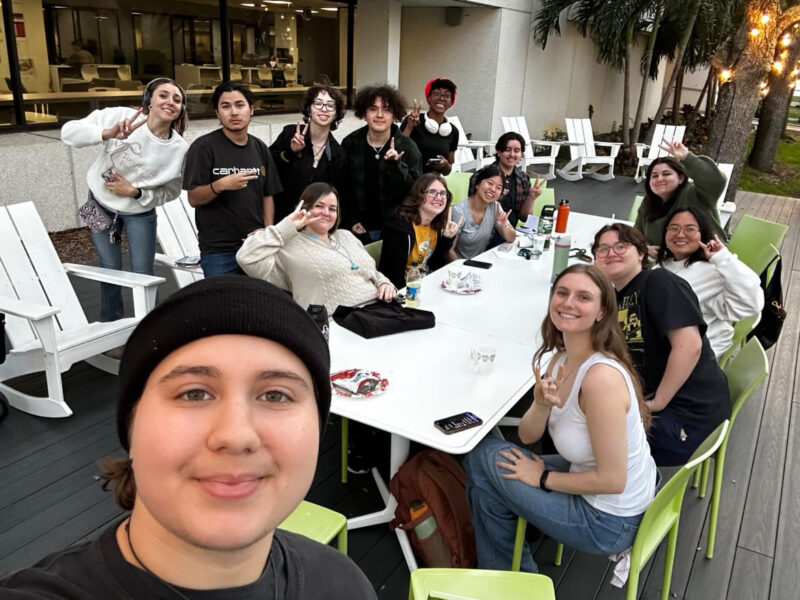Scene: A group of doctoral students from an array of different backgrounds and nationalities are gathered in Spain. They are not arguing, yelling or protesting, nor have they assembled to debate one another.
Instead, they are singing.
“There were 10 or 11 of us, and we were almost all from different parts of the world,” said Dr. Steve Diasio, a professor of management at USF St. Petersburg.
“We would regularly have dinners that would celebrate each other’s culture, but we would also share each other’s music. We had a Brazilian singing bossa nova, an Egyptian and Syrian singing a poem in Arabic, a Romanian playing guitar, and then the two Americans. I sang ‘Sweet Home Chicago.’”

Diasio, who studied international business administration in London and later earned his doctorate in management science from the esteemed ESADE Business School in Barcelona, also employs the unifying principle of music in his professional life.
His article, “Not all that jazz! Jamband as a metaphor for organizing new models of innovation,” was published in volume 34 of the European Management Journal. It examines the parallels between jam bands, such as the Grateful Dead, and IBM InnovationJams.
“Innovation is how companies come up with new products, services and ideas, and evaluate them, and push them to market,” said Diasio.
Traditionally, he said, companies such as IBM or Procter & Gamble relied on only a handful of people to act as innovators, but now, this process is expanding.
“The world has changed,” said Diasio.
“We call the old model of innovation closed innovation, and (what we have now are) more open models of innovation. Now, (products) can go to market in many different ways. The boundaries of the firm are more porous, and knowledge can flow inward and outward, more easily and more fluidly.”
This process of open innovation enables a larger community of collaborators to tackle real-world problems.
“I spent three years working with IBM, (and they have a) platform called an InnovationJam,” said Diasio. “It’s an online large-scale collaborative platform that enables collaboration of up to 300,000 people.”
The InnovationJam operates on the assumption that a large group of people can solve challenging business or societal problems more effectively than, perhaps, an individual, or a small group of experts
“Problems such as climate change and ending world poverty are not simple problems,” said Diasio.
“There’s not one individual or group of politicians that have all the answers. The idea is that bits of knowledge can be organized and tapped into, (and that the) collective intelligence of crowds can provide a better solution to these problems.”
The communal creativity and open innovation that are welcomed in an IBM InnovationJam mirrors the framework of jam bands, according to Diasio.
Jam bands are bands that rely heavily on skills of improvisation to make their music, often creating sounds and songs on the spot. The model of jam bands in innovation stands in stark contrast to the metaphor of jazz music that has been used to describe innovation in the past.
“The framing of this paper is because there is past research literature that says innovation is like jazz,” said Diasio.
“However, this was 30 years ago, and if we believe globalization has happened, and technology has changed, business has changed, and innovation has changed, don’t we need new metaphors to understand new models of innovation?”
This is exactly what Diasio set out to do in his article: show the limitations of the traditional jazz metaphor, and explore the new model of innovation.
“Managers have been using the metaphor of jazz (but) there are severe limitations to understanding that,” said Diasio.
“It’s not open to diversity, there’s no engagement from the audience, there’s a very limited role of improvisation. When we start using the jam band metaphor, these start to change.”
“For instance,” he said, “the most famous jam band of all time is the Grateful Dead. Think of it like this: the Grateful Dead will start a song, and that song might go on for 20, 30 minutes. It may not end; they may go in different directions (and) improvise, (or) pull music from music genres to make this new music. They might be playing from rock, folk, blues, reggae. That’s not how jazz works — it’s very structured. (But) with the jam band, there’s a broader range of improvisation.”
The jam band metaphor is also a proponent for community-driven innovation.
“Diversity was important to (the Grateful Dead). Anyone can be a Deadhead,” said Diasio.
“They built this relationship with the community, and the role of the community was very, very close. They built bonds, they shared intellectual property, they shared their lifestyle. It was very different and it became an immersive experience. That is exactly what happens in InnovationJams.”
This concept of close-knit community in open innovation also sounds like the bond that Diasio formed with his fellow doctoral students back in Barcelona.
“These are experiences where you’re learning, you’re giving, you’re receiving, you’re respecting,” said Diasio. “It’s very personal. This only happens in a diverse setting, a very personal environment, and you’re bringing your whole self, and the openness of your heart and your mind.”
Whether you’re an innovator, doctoral student in Spain, or, yes, a Deadhead, the message seems clear: One way or another, we all need each other.
Photo courtesy of University of South Florida St. Petersburg



